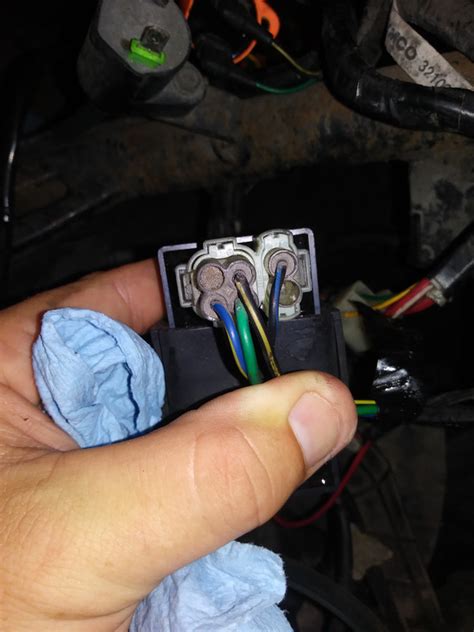Common 2-Stroke CDI Problems and Solutions
Two-stroke engines, known for their power-to-weight ratio, rely heavily on the CDI (Capacitor Discharge Ignition) unit for reliable spark generation. A malfunctioning CDI can leave your engine sputtering, misfiring, or completely dead. This article delves into the common problems plaguing 2-stroke CDI units and provides practical solutions to get your engine running smoothly again. We'll also tackle some frequently asked questions surrounding CDI issues.
Understanding the CDI Unit
Before diving into troubleshooting, let's briefly understand the CDI's function. The CDI unit is the brain of your ignition system. It receives a signal from the engine's pickup coil, which senses the position of the flywheel. Based on this signal, the CDI charges a capacitor and then discharges it through the ignition coil, creating the high-voltage spark needed to ignite the air-fuel mixture. Any disruption in this process leads to ignition problems.
Common 2-Stroke CDI Problems
Several issues can cause your 2-stroke CDI unit to malfunction. Here are some of the most common:
1. No Spark
This is the most obvious symptom of a CDI problem. If your engine won't start and you've ruled out other potential causes (fuel, compression, etc.), the CDI is a prime suspect. A complete lack of spark often points to a faulty CDI unit itself or a problem with the power supply to the CDI.
2. Weak Spark
A weak spark might manifest as a sputtering engine, difficulty starting, or poor performance. This could indicate a failing CDI unit, a low-voltage power supply, or a problem with the ignition coil. A weak spark often leads to incomplete combustion and reduced engine power.
3. Intermittent Spark
An intermittent spark is frustrating to diagnose. The engine might run sporadically, cutting out unexpectedly. This points to a CDI unit on its way out, a faulty connection within the ignition system, or a problem with the pickup coil.
4. CDI Unit Overheating
While less common, excessive heat can damage the internal components of the CDI unit. This is often caused by a faulty coil, improper wiring, or a continuously running engine under heavy load.
Troubleshooting and Solutions
Diagnosing CDI problems requires a systematic approach:
1. Visual Inspection:
Begin by visually inspecting the CDI unit and its wiring harness for any signs of damage, such as burned wires, loose connections, or physical cracks. Repair or replace damaged components as needed.
2. Testing the CDI Unit:
While a complete CDI test requires specialized equipment, you can perform some basic checks. Verify the power supply to the CDI unit, checking for continuity in the wiring harness using a multimeter. Also, carefully inspect the connections to the pickup coil and the ignition coil for any corrosion or loose connections.
3. Testing the Pickup Coil:
The pickup coil generates the signal that triggers the CDI. A faulty pickup coil can prevent the CDI from functioning correctly. Testing the pickup coil's output requires a multimeter and an understanding of its specifications.
4. Testing the Ignition Coil:
The ignition coil transforms the low-voltage pulse from the CDI into the high-voltage spark. A faulty ignition coil can produce a weak or intermittent spark. Testing the ignition coil’s resistance and primary and secondary winding continuity can identify a faulty component.
5. Replacing the CDI Unit:
If all other components test okay, the CDI unit itself is likely the culprit. Replacing the CDI unit is often the most straightforward solution. Ensure you obtain a CDI unit specifically designed for your engine model.
Frequently Asked Questions (FAQs)
How long do 2-stroke CDI units last?
The lifespan of a 2-stroke CDI unit varies depending on the quality of the component, usage, and environmental conditions. However, they generally last several years with proper maintenance.
Can a bad CDI unit damage other engine components?
While a faulty CDI unit won't directly damage other major engine components, prolonged operation with a weak or intermittent spark can lead to issues like fouled spark plugs, inefficient combustion, and potential engine damage due to incomplete combustion.
What are the symptoms of a bad stator on a 2-stroke engine?
A bad stator (which supplies power to the CDI) typically results in electrical issues like a lack of power to the ignition system, leading to a no-spark condition.
Can I repair a faulty CDI unit?
While some minor repairs might be possible (such as fixing a loose connection), repairing the internal components of a CDI unit is generally not feasible due to their complex circuitry. Replacement is usually the most practical solution.
By understanding the common problems associated with 2-stroke CDI units and following these troubleshooting steps, you can diagnose and resolve ignition issues efficiently and get your engine back up and running. Remember to always consult your engine's service manual for specific instructions and component specifications.

